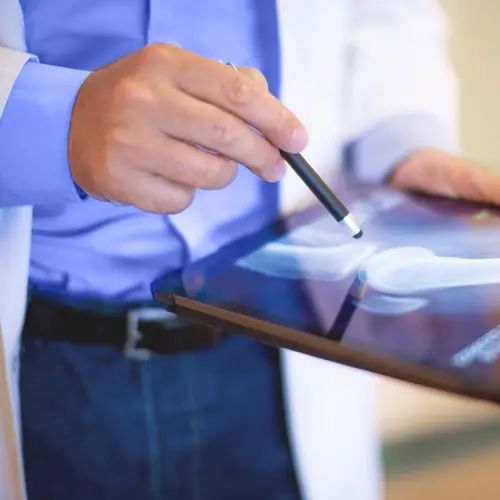Rheumatoid arthritis (RA) used to cause major damage to hands and feet. Joints became deformed. Fingers and toes were bent out of shape. Today, these changes are less common and less severe, thanks to earlier diagnosis and better treatment.
The disease is one of many causes of deformed joints. For example, osteoarthritis can result in crooked fingers. Tight-fitting shoes might lead to bunions. But if you have RA, joint deformities are a sign that your disease isn’t under control.
The good news: RA medications may prevent, slow, or stop the damage that leads to deformed joints. Plus, there are many ways to ease pain and improve how well your joints work if you already have crooked or bent fingers and toes.
What Happens?
When you have RA, your immune system attacks your joints:
- Immune cells gather inside the joint lining.
- They form a layer of abnormal tissue.
- The tissue releases chemicals that cause swelling, or inflammation.
Inflammation wears down bone and cartilage, the tissue that cushions the ends of bones that make up a joint. Swelling can also stretch out tissues that help keep the joint in place. All this damage can lead to unstable joints with bones that don’t line up the way they should.
You’re more likely to get deformities if you have high levels of two substances in your blood: C-reactive protein (CRP) and rheumatoid factor (RF). Ask your doctor about your risk and what you can do to protect your joints.
What Are the Types of Deformities?
Early in the disease, RA tends to attack the small joints of your hands and feet. This can lead to several types of deformities, including:
Ulnar drift. Your fingers lean away from your thumb and toward your pinky.
Boutonnière deformity. Also called a buttonhole deformity. Your middle finger joint bends downward (toward your palm), while your top finger joint bends away from the palm.
Swan-neck deformity. The base and top joint of your finger bend downward, but the middle joint is straight.
Hitchhiker’s thumb: Also called a z-shaped deformity. Your thumb flexes at the joint where it meets your palm, then bends backward at the joint below your thumbnail.
Bunion. The base of your big toe (where it attaches to the foot) gets larger and sticks out. This may force your big toe to press against the second toe, forcing it to overlap the third.
Claw toe. Describes different types of deformities:
- Toe bends upward from the ball of your foot
- Toe bends downward, toward the sole of your shoe, at the middle joint
- Toe bends downward at the top joint (by the toenail)
Can Medication Help?
Yes. As a first-line treatment, your doctor may suggest:
- Nonsteroidal anti-inflammatory drugs (NSAIDs)
- Corticosteroids
- Disease-modifying antirheumatic drugs (DMARDs)
NSAIDs and corticosteroids can help relieve pain and reduce inflammation. Only DMARDs can stop the disease from taking a toll on your joints. That’s why doctors often start treatment with these drugs as soon as you’re diagnosed. In many cases, they can prevent joint deformities.
Will I Need Surgery?
Not unless the deformity has a big impact on your life. For damaged fingers, your doctor or a hand therapist can provide splints and exercises. Warm wax baths (your doctor might call it paraffin) may ease pain. A hand therapist may also suggest new ways to use your hands that can lessen pain and protect your joints.
If you’re just starting to develop claw toe, splints or tape can help straighten out your toes. (Be sure to get your doctor’s advice before you try either method.)
If you’ve had claw toe for a while, a splint may not be able to straighten out the joint. These tips can make it more comfortable to walk:
- Put a special pad in your shoe to reduce pressure on the ball of your foot.
- Try shoes that have an extra-deep toe box.
- Ask a shoe repair shop to stretch the toe box where you need extra room.
Comfortable shoes can also make it easier to walk with bunions.
Surgery for Hands and Feet
If you have severe joint deformity -- painful, crooked fingers and toes -- surgery may be an option. It won’t cure your RA, but it can improve the deformity, ease pain, and help your joints work better. Some common types of surgery include:
- Synovectomy -- removal of the lining of the joint, called the synovium
- Joint replacement
- Joint fusion (fusing the bones in the joint together)
- Bunion surgery

